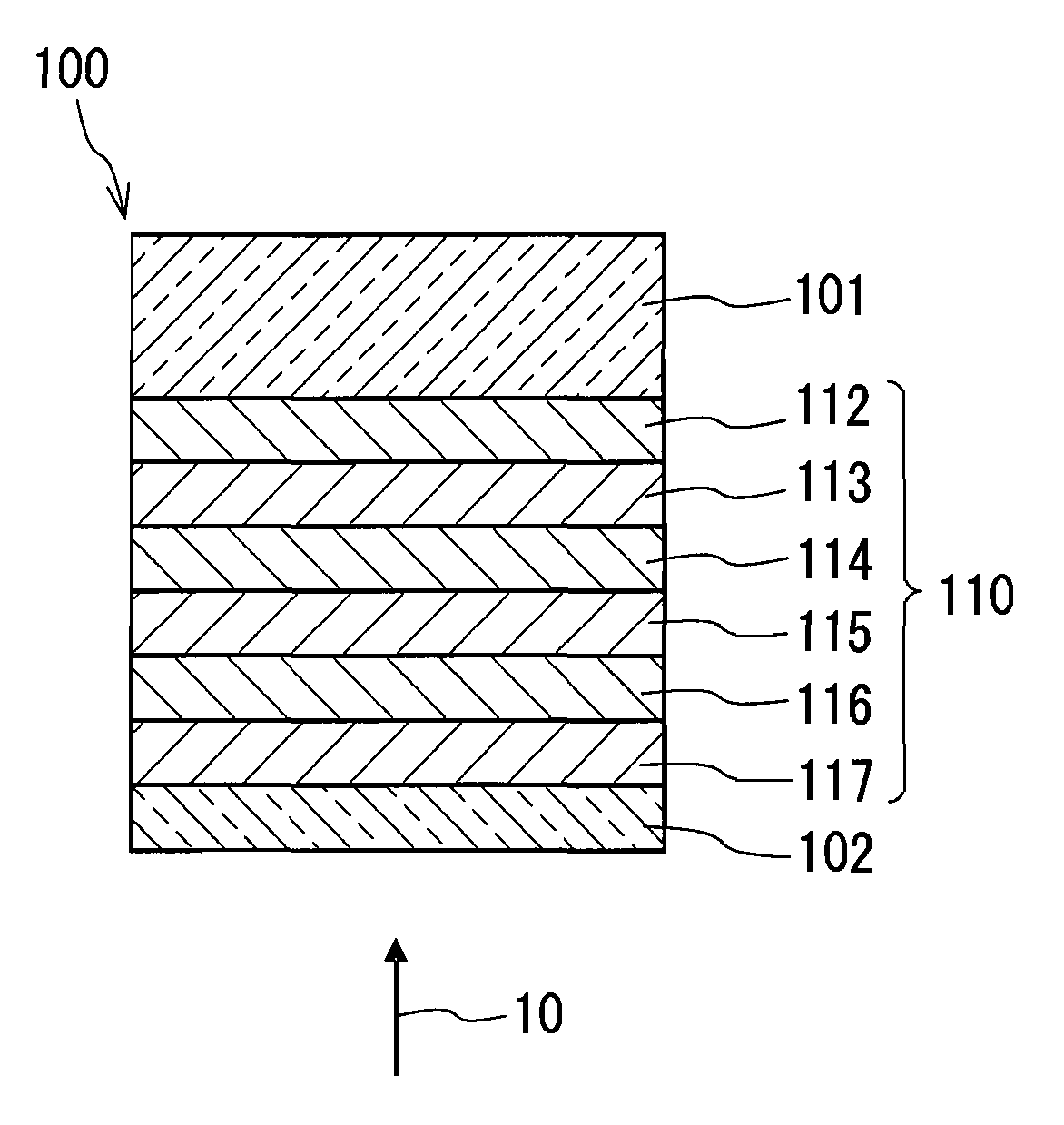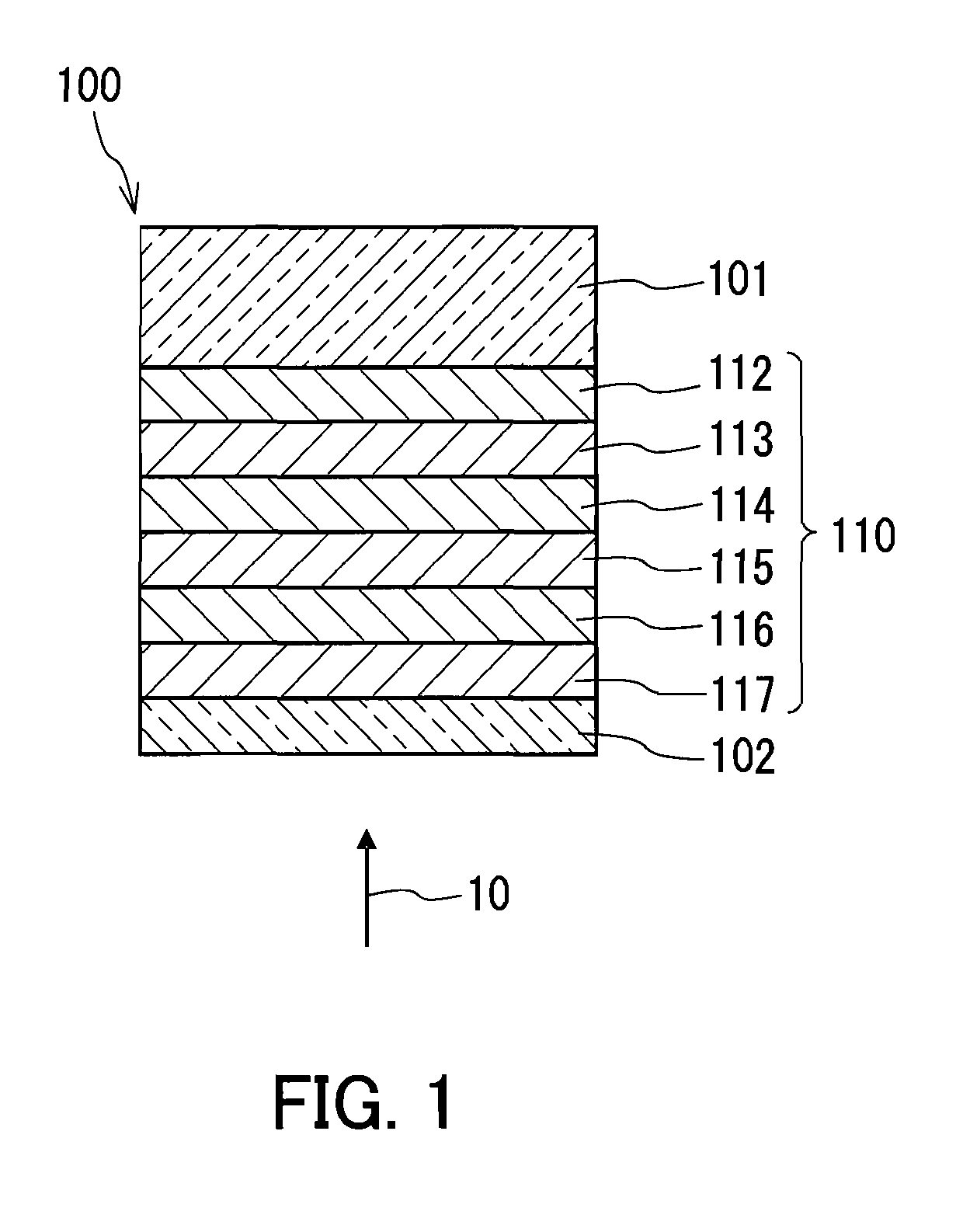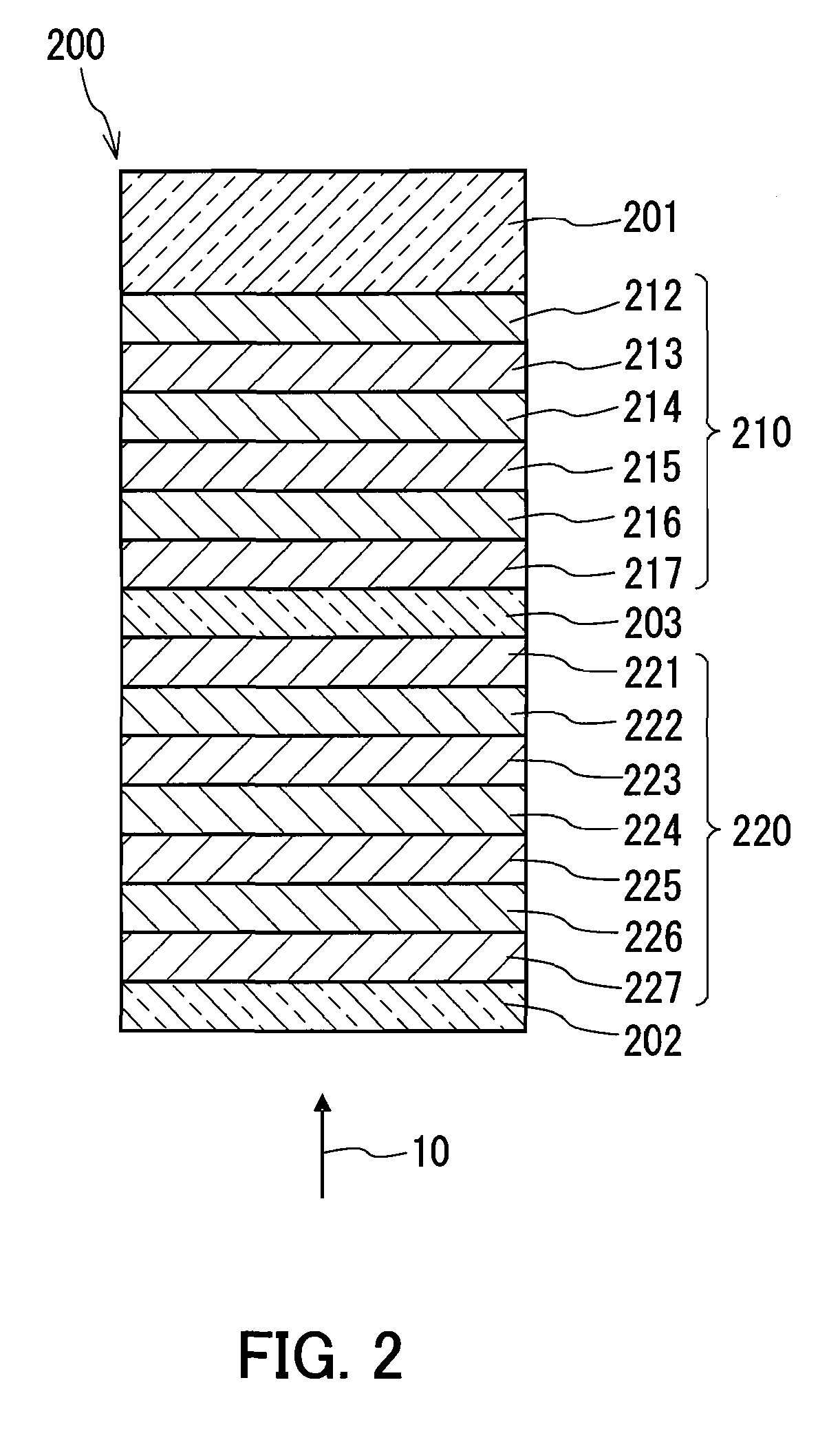Information recording medium, method for producing the same, and sputtering target
a technology of information recording medium and sputtering target, which is applied in the field of information recording medium, method for producing the same, and sputtering target, which can solve the problems of poor recording mark storage stability, insufficient recording properties, and small signal amplitude, and achieves high crystallization rate, large optical variation, and high crystallization temperature
- Summary
- Abstract
- Description
- Claims
- Application Information
AI Technical Summary
Benefits of technology
Problems solved by technology
Method used
Image
Examples
embodiment 1
[0037]An example of the information recording medium will be described as Embodiment 1 of the present invention. FIG. 1 shows a partial sectional view of an information recording medium 100 as the example. In the information recording medium 100, an information layer 110 and a transparent layer 102 are formed sequentially on a substrate 101. The information layer 110 is formed of a reflective layer 112, a dielectric layer 113, an interface layer 114, a recording layer 115, an interface layer 116, and a dielectric layer 117 disposed in this order on one surface of the substrate 101.
[0038]The information recording medium 100 can be used as a Blu-ray Disc that has a capacity of 25 GB or more and allows information to be recorded thereon or reproduced therefrom with a laser beam 10 having a wavelength of around 405 nm in a blue-violet region. The laser beam 10 is incident on the information recording medium 100 thus configured from a transparent layer 102 side, and thereby, the recordin...
embodiment 2
[0103]An example of the information recording medium will be described as Embodiment 2 of the present invention. FIG. 2 shows a partial sectional view of an information recording medium 200 as the example. In the information recording medium 200, a first information layer 210, an interlayer 203, a second information layer 220, and a transparent layer 202 are formed sequentially on a substrate 201. The first information layer 210 is formed of a reflective layer 212, a dielectric layer 213, an interface layer 214, a recording layer 215, an interface layer 216, and a dielectric layer 217 disposed in this order on one surface of the substrate 201. The second information layer 220 is formed of a dielectric layer 221, a reflective layer 222, a dielectric layer 223, an interface layer 224, a recording layer 225, an interface layer 226, and a dielectric layer 227 disposed in this order on one surface of the interlayer 203.
[0104]The laser beam 10 is incident from a transparent layer 202 side...
embodiment 3
[0131]An example of the information recording medium will be described as Embodiment 3 of the present invention. FIG. 3 shows a partial sectional view of an information recording medium 300 as the example. In the information recording medium 300, a first information layer 310, an interlayer 303, a second information layer 320, an interlayer 304, a third information layer 330, and a transparent layer 302 are disposed sequentially on a substrate 301. The first information layer 310 is formed of a reflective layer 312, a dielectric layer 313, an interface layer 314, a recording layer 315, an interface layer 316, and a dielectric layer 317 disposed in this order on one surface of the substrate 301. The second information layer 320 is formed of a dielectric layer 321, a reflective layer 322, a dielectric layer 323, an interface layer 324, a recording layer 325, an interface layer 326, and a dielectric layer 327 disposed in this order on one surface of the interlayer 303. The third inform...
PUM
 Login to View More
Login to View More Abstract
Description
Claims
Application Information
 Login to View More
Login to View More - R&D
- Intellectual Property
- Life Sciences
- Materials
- Tech Scout
- Unparalleled Data Quality
- Higher Quality Content
- 60% Fewer Hallucinations
Browse by: Latest US Patents, China's latest patents, Technical Efficacy Thesaurus, Application Domain, Technology Topic, Popular Technical Reports.
© 2025 PatSnap. All rights reserved.Legal|Privacy policy|Modern Slavery Act Transparency Statement|Sitemap|About US| Contact US: help@patsnap.com



